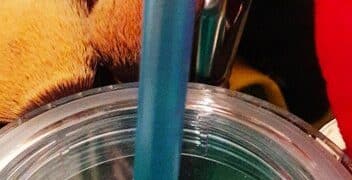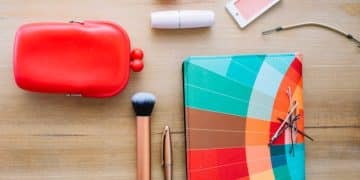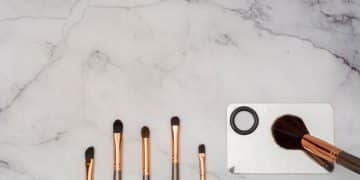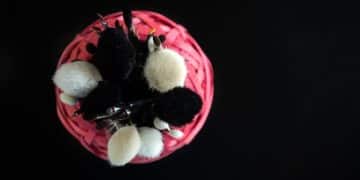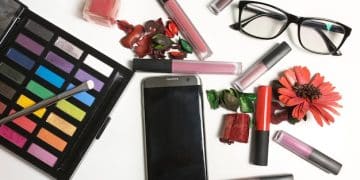The Best Makeup Brushes: Your Guide to Application & Cleaning
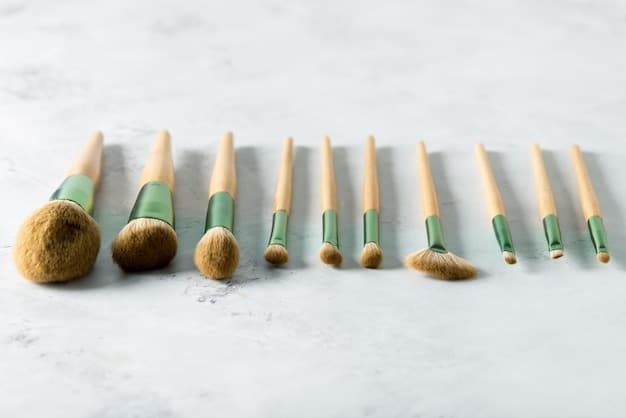
Discover the best makeup brushes for flawless application, including essential types and expert tips on how to clean them effectively, ensuring both hygiene and longevity.
Achieving a flawless makeup look starts with the right tools. That’s why knowing about the best makeup brushes for every application (and how to clean them) is vital for any beauty enthusiast. From foundation to eyeshadow, the right brushes can make all the difference.
The Essential Brushes for Your Makeup Bag
Building a well-rounded brush collection doesn’t require every brush on the market. Focus on the essentials that will cover most of your makeup application needs. Knowing the function of each brush will improve your makeup skills and ensure better results.
Foundation Brush
A foundation brush is used to apply and blend foundation evenly across the face. Look for brushes with densely packed bristles for a smooth, streak-free finish.
Concealer Brush
Smaller than a foundation brush, a concealer brush is designed to precisely apply concealer to blemishes, under-eye circles, and other areas needing coverage.
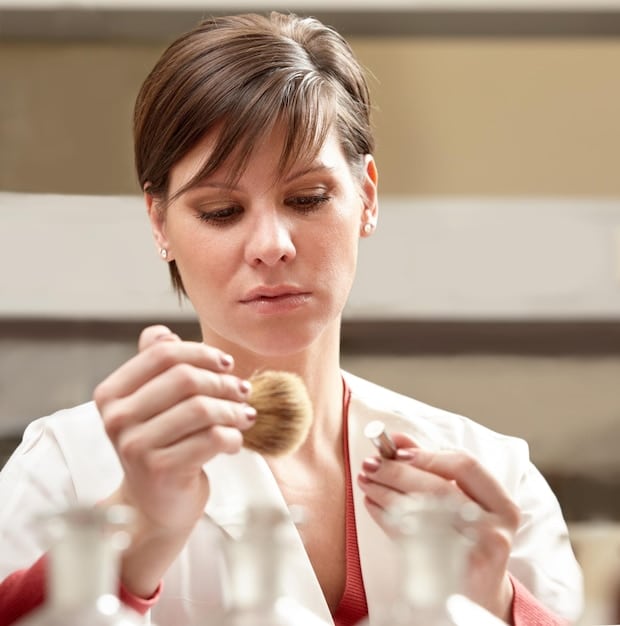
Powder Brush
A large, fluffy brush is ideal for applying loose or pressed powder to set your makeup. Its soft bristles ensure a light, even distribution.
- Angled Blush Brush: Allows for precise application of blush along the cheekbones.
- Eyeshadow Brushes: Varied sizes and shapes for applying, blending, and defining eyeshadow.
- Eyebrow Brush: Small, angled brush for filling in and shaping eyebrows with powder or pomade.
These essential brushes are the building blocks of a great makeup routine. Understanding their specific uses will allow you to create a variety of looks, from natural to glam.
Understanding Different Brush Bristles
Makeup brushes are generally made with two types of bristles: natural and synthetic. Each type has its advantages and is better suited for certain products and applications. Choosing the right bristle type can significantly impact your makeup’s finish and longevity.
Natural Bristles
Natural bristles are typically made from animal hair, such as goat, squirrel, or pony. These brushes are excellent for applying powder products because their porous texture allows them to pick up and distribute pigment effectively.
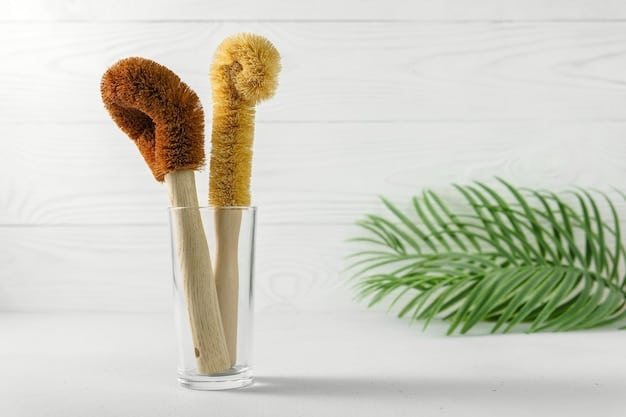
Synthetic Bristles
Synthetic brushes are made from man-made materials like nylon or taklon. They are ideal for applying liquid and cream products because they don’t absorb as much product as natural bristles. This makes them more hygienic and easier to clean.
- Hygiene: Synthetic brushes are less likely to harbor bacteria, making them a more hygienic choice.
- Cruelty-Free: Synthetic brushes are a cruelty-free alternative for those who prefer not to use animal products.
- Product Absorption: Natural bristles absorb more product, which can lead to wasted makeup and more frequent cleaning.
Understanding the differences between natural and synthetic bristles helps you choose the best brushes for your preferred makeup products and application techniques. Synthetic brushes are excellent for liquids and creams, while natural brushes excel with powders.
Step-by-Step Guide to Cleaning Your Makeup Brushes
Keeping your makeup brushes clean is crucial for maintaining good skin health and ensuring the longevity of your brushes. Dirty brushes can harbor bacteria, leading to breakouts and skin irritation. Regular cleaning prevents product buildup and keeps your brushes performing at their best.
Gather Your Supplies
Before you start cleaning, gather your supplies. You will need a gentle cleanser (such as baby shampoo or a specialized brush cleaner), a silicone cleaning mat or your hand, and a clean towel.
Wash the Bristles
Wet the bristles of your brush with lukewarm water, avoiding getting water in the ferrule (the metal part that connects the bristles to the handle). Apply a small amount of cleanser to the bristles and swirl the brush on the cleaning mat or in the palm of your hand to create a lather.
- Rinse Thoroughly: Rinse the bristles thoroughly under lukewarm water until all traces of cleanser are gone.
- Reshape and Dry: Gently squeeze out excess water and reshape the bristles with your fingers. Lay the brushes flat on a clean towel to dry.
- Deep Cleaning: For a more thorough cleaning, consider using a brush cleaning device, which can help remove stubborn residue.
Cleaning your makeup brushes regularly is an essential part of your beauty routine. Aim to clean your brushes at least once a week to prevent bacteria buildup and maintain healthy skin.
Choosing the Right Brushes for Eyeshadow Application
Achieving the perfect eyeshadow look requires a variety of brushes designed for different purposes. From applying base colors to blending and creating detailed looks, the right eyeshadow brushes can transform your makeup game.
Flat Shader Brush
A flat shader brush is ideal for packing color onto the eyelid. Its dense bristles allow for even and intense color application.
Blending Brush
A fluffy blending brush is essential for softening harsh lines and creating seamless transitions between eyeshadow colors. Look for a brush with soft, tapered bristles.
- Pencil Brush: A small, pointed brush for precise application of eyeshadow in the crease or along the lash line.
- Angled Liner Brush: Perfect for applying gel or cream eyeliner with precision.
- Smudge Brush: Used to soften and blend eyeliner or eyeshadow along the lash line for a smoky effect.
Investing in a range of eyeshadow brushes will enable you to create a variety of eye makeup looks, from simple and natural to bold and dramatic. Experiment with different shapes and sizes to find what works best for you.
The Best Brushes for Achieving a Flawless Base
Creating a flawless base is the foundation of any great makeup look. Using the right brushes for applying foundation, concealer, and powder can make a significant difference in the overall finish and longevity of your makeup.
Foundation Brush Options
There are several types of foundation brushes to choose from, including flat foundation brushes, buffing brushes, and stippling brushes. Each type offers a different level of coverage and finish. Flat foundation brushes provide medium to full coverage, while buffing brushes create a more natural, airbrushed effect. Stippling brushes are great for achieving a light, dewy finish.
Concealer Brush Techniques
A small, tapered concealer brush is perfect for pinpoint concealing blemishes or dark circles. Use a dabbing motion to apply concealer, and then gently blend the edges with your finger or a small blending brush.
- Powder Brush Selection: Opt for a large, fluffy powder brush for applying loose or pressed powder to set your makeup.
- Bronzer and Contour Brushes: Angled brushes are ideal for applying bronzer to warm up the complexion and contour brushes to sculpt the face.
- Setting Spray: To keep the base flawless and lasting all day, spray some setting spray.
With the proper brushes, you can achieve a smooth, even, and long-lasting makeup base. From foundation to finishing powder, invest in quality brushes that suit your skin type and makeup preferences.
Maintaining Your Brushes for Longevity
Proper care and maintenance are essential for extending the life of your makeup brushes and keeping them in optimal condition. Regular cleaning is just the first step. Understanding how to store and handle your brushes properly will ensure they remain effective and hygienic for years to come.
Storing Your Brushes
Store your brushes in a brush holder or organizer to protect the bristles from dust and damage. Avoid keeping your brushes in a humid environment, such as a bathroom, as this can promote bacterial growth.
Proper Handling Techniques
When using your brushes, avoid pressing too hard on the bristles, as this can cause them to fray and break. Use gentle, sweeping motions to apply your makeup, and avoid using your brushes for purposes other than their intended use.
- Avoid Harsh Chemicals: Avoid using harsh chemicals or abrasive cleaners on your brushes, as these can damage the bristles.
- Check Bristle Health : Regularly inspect your brushes for signs of wear and tear, such as frayed bristles or a loose ferrule.
- When to Replace: Replace brushes that are shedding excessively or have become permanently misshapen.
By following these tips, you can keep your makeup brushes clean, organized, and in excellent condition. Proper maintenance not only extends the life of your brushes but also ensures your makeup application remains flawless.
| Key Point | Brief Description |
|---|---|
| ✨ Essential Brushes | Focus on foundation, concealer, powder, blush, eyeshadow, and eyebrow brushes. |
| 🌿 Bristle Types | Natural for powders, synthetic for liquids/creams. Synthetic is more hygienic. |
| 🧼 Cleaning Steps | Wash bristles with gentle cleanser, rinse, reshape, and air dry. Clean weekly. |
| 🧽 Maintenance | Store properly, handle gently, avoid harsh chemicals, and replace when needed. |
Frequently Asked Questions
▼
It’s recommended to clean your makeup brushes at least once a week to prevent bacteria buildup and maintain healthy skin. Brushes used for liquid or cream products may need more frequent cleaning.
▼
Lay your makeup brushes flat on a clean towel to air dry. Avoid drying them upright, as water can seep into the ferrule and loosen the glue, causing the bristles to shed.
▼
While dish soap can remove makeup residue, it can also be harsh on the bristles. It’s best to use a gentle cleanser like baby shampoo or use a specialized brush cleaner.
▼
Replace your makeup brushes when they start shedding excessively, the bristles become frayed or misshapen, or the ferrule loosens. Proper maintenance can extend their lifespan.
▼
It depends on the intended use. Synthetic brushes are excellent for liquids and creams due to less absorption, while natural brushes work best with powders. Synthetic options are also more hygienic and cruelty-free.
Conclusion
Choosing and maintaining the right makeup brushes can significantly enhance your beauty routine. By understanding the different types of brushes, their uses, and proper cleaning techniques, you can achieve a flawless makeup application and keep your skin healthy and radiant.
